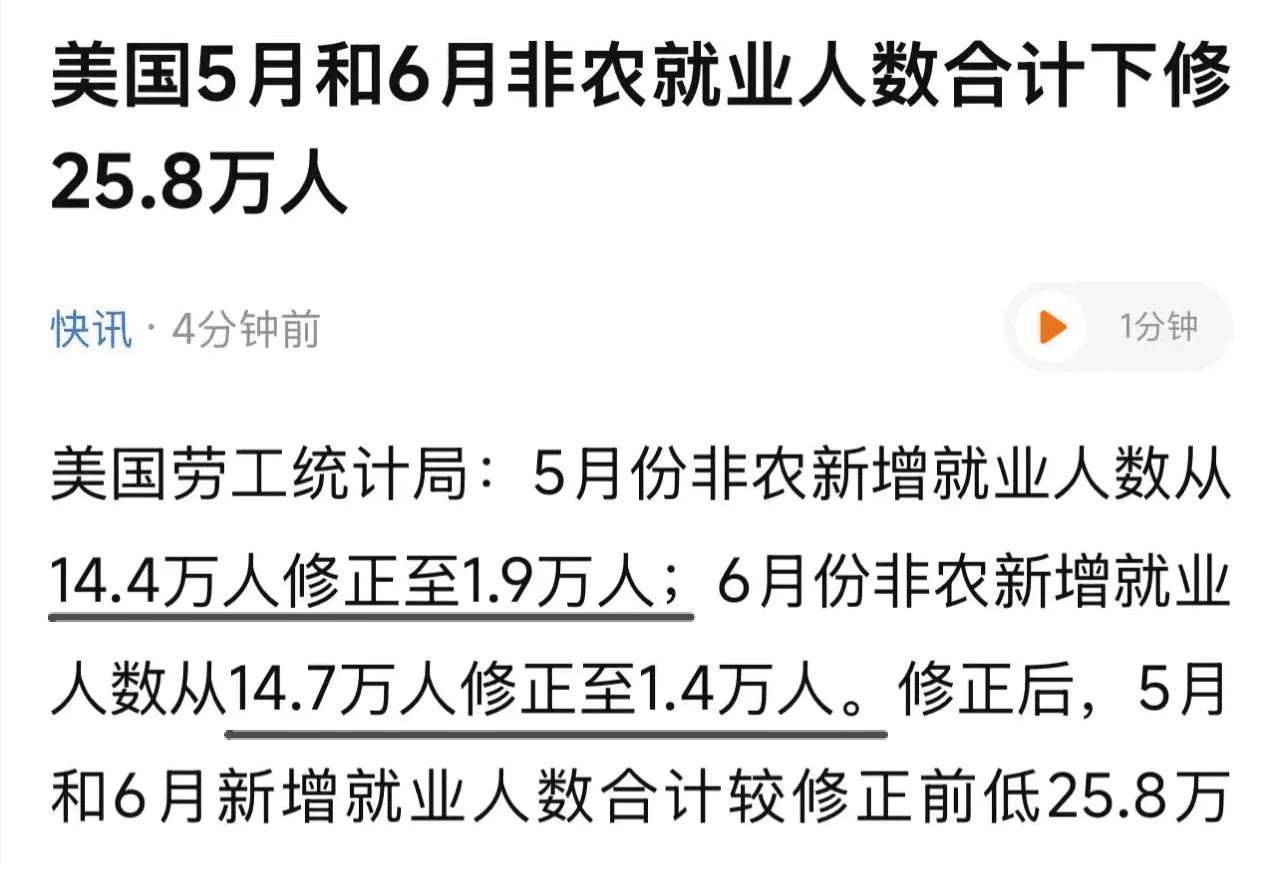The sharp drop in the crypto market last night was not coincidental; BTC again fell below the 113,000 mark, with the core trigger being a 'disruptive' non-farm data revision report — previously seen as 'positive for easing', the employment data was suddenly revised downward by officials, directly shattering the market's fantasy of Federal Reserve rate cuts.
How 'violent' is the data revision? It almost overturns the previous logic.
The impact of this revision report is equivalent to throwing a bucket of cold water on the market:
The non-farm payrolls for May were revised down from 144,000 to 19,000, a reduction of over 87%;
The June data is even more exaggerated, cut from 147,000 to 14,000, only 9.5% of the original value.
Such a level of correction is deemed rare. It should be noted that the non-farm data for May-June was previously interpreted by the market as key evidence of 'cooling in the job market', and was the core basis for supporting the 'September rate cut probability rising to 60%'. Now that the data has been restored to its original form, it implies that 'job weakness' was merely an illusion — the actual resilience of the job market far exceeds expectations, and the urgency for the Federal Reserve to cut rates has instantly diminished.
Using a comparison from the cryptocurrency world: it's like a project team claims to 'spend 10 million U for buyback to pump the price', and after the community gets excited, suddenly changes to 'only preparing 500U'; it's no surprise if the market collapses.
Why can corrected data crush the market?
On the surface, it looks like a data flip, but at a deeper level, it's a 'complete reversal of expectation logic':
Previously, the market had bet on easing in advance based on the expectation of 'cooling employment' (both US stocks and cryptocurrencies had a round of rebounds);
The revised data indicates that the job market is not as weak as previously thought, and rate cuts may be delayed or even canceled — this means the 'liquidity easing expectations' supporting asset prices have been undermined.
More critically, this kind of 'official correction' directly undermines the market's trust in the data. When core economic indicators become 'unreliable', funds instinctively choose to seek refuge, with cryptocurrencies being the first to bear the brunt as high-risk assets. Last night, not only did BTC drop, but the Nasdaq index also plunged 2%, confirming the 'reversal of liquidity expectations' transmission logic.
Subsequent impact: Do not underestimate the chain reaction of 'expectation collapse'.
In the short term, the market needs to reprice the 'Federal Reserve's policy path':
The probability of a rate cut in September may drop sharply from 60% to below 30%;
The US dollar index may return to above 100, further suppressing risk assets.
For BTC, breaking the 113,000 level is not just a numerical change but may trigger a chain of technical stop-losses — a large number of long positions in the 115,000-120,000 range may be forced to liquidate, increasing short-term selling pressure.
But it should also be noted: the impact of data corrections is often a 'one-time release'. If there are no worse subsequent news (such as inflation rebound), a technical recovery may occur after the sharp decline. However, in the short term, the 'rate cut fantasy' has been shattered, and the market is likely entering a phase of volatility in search of a bottom.
#BTC #ETH #美SEC启动ProjectCrypto计划 #美国初请失业金人数 #白宫数字资产报告


